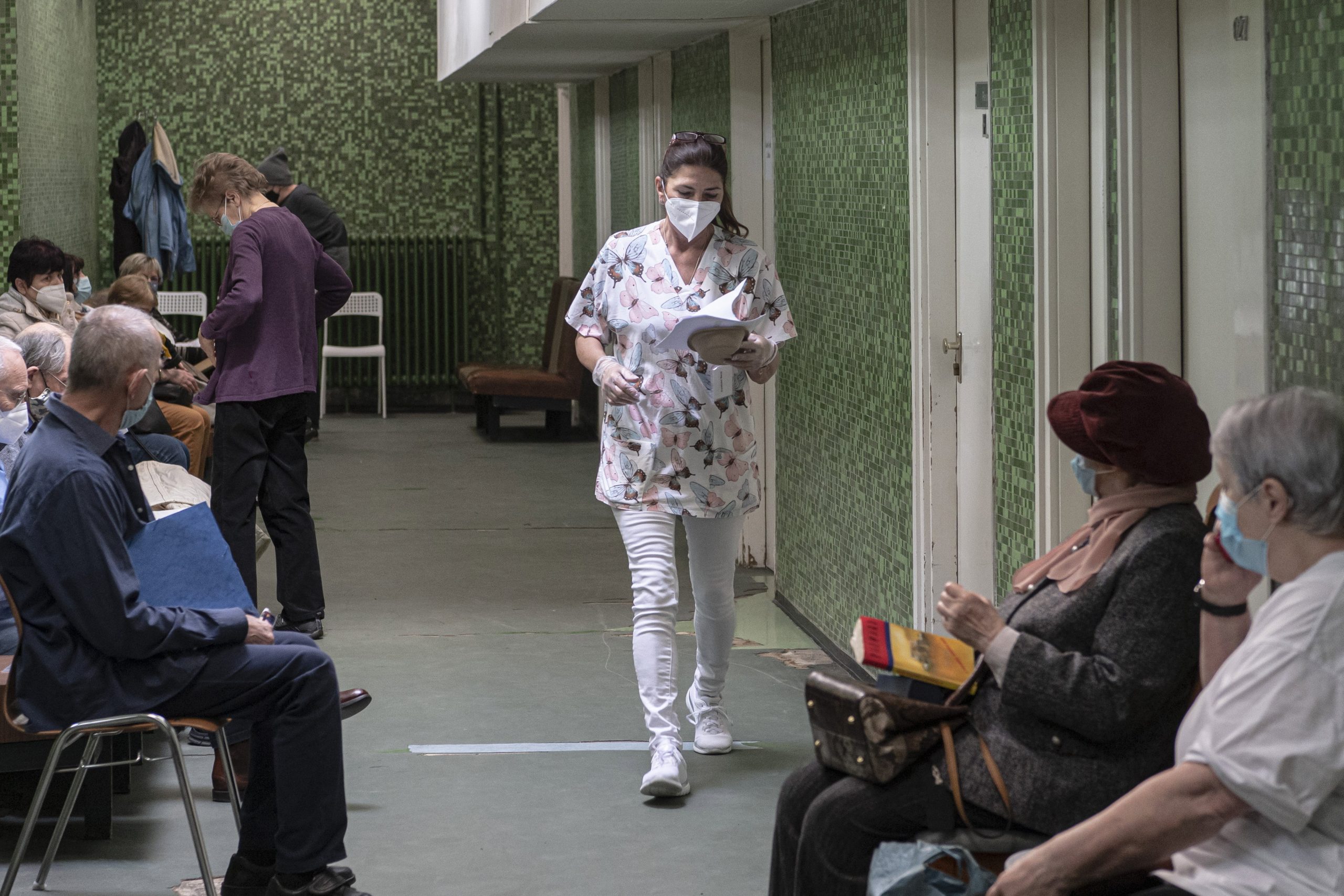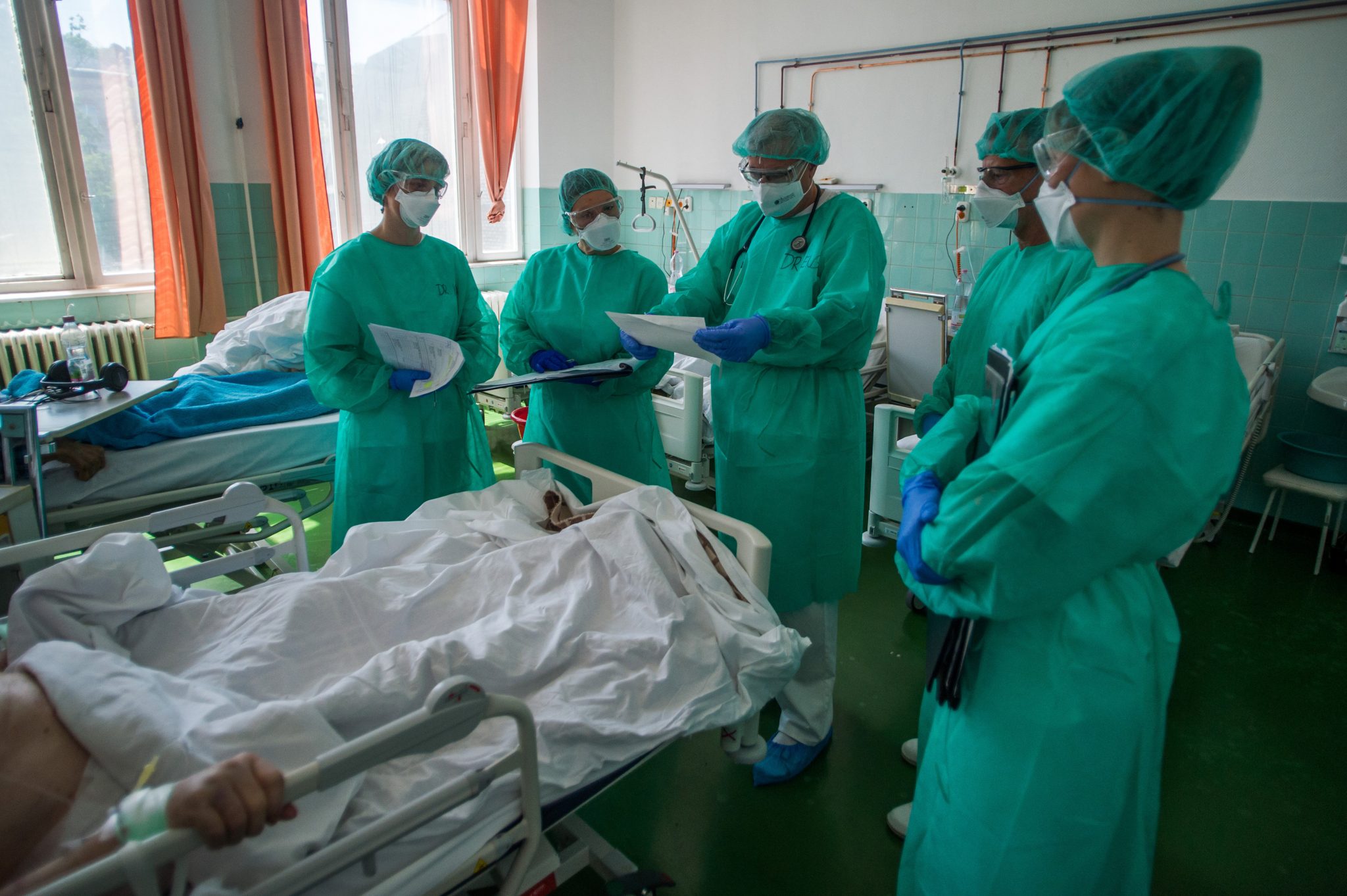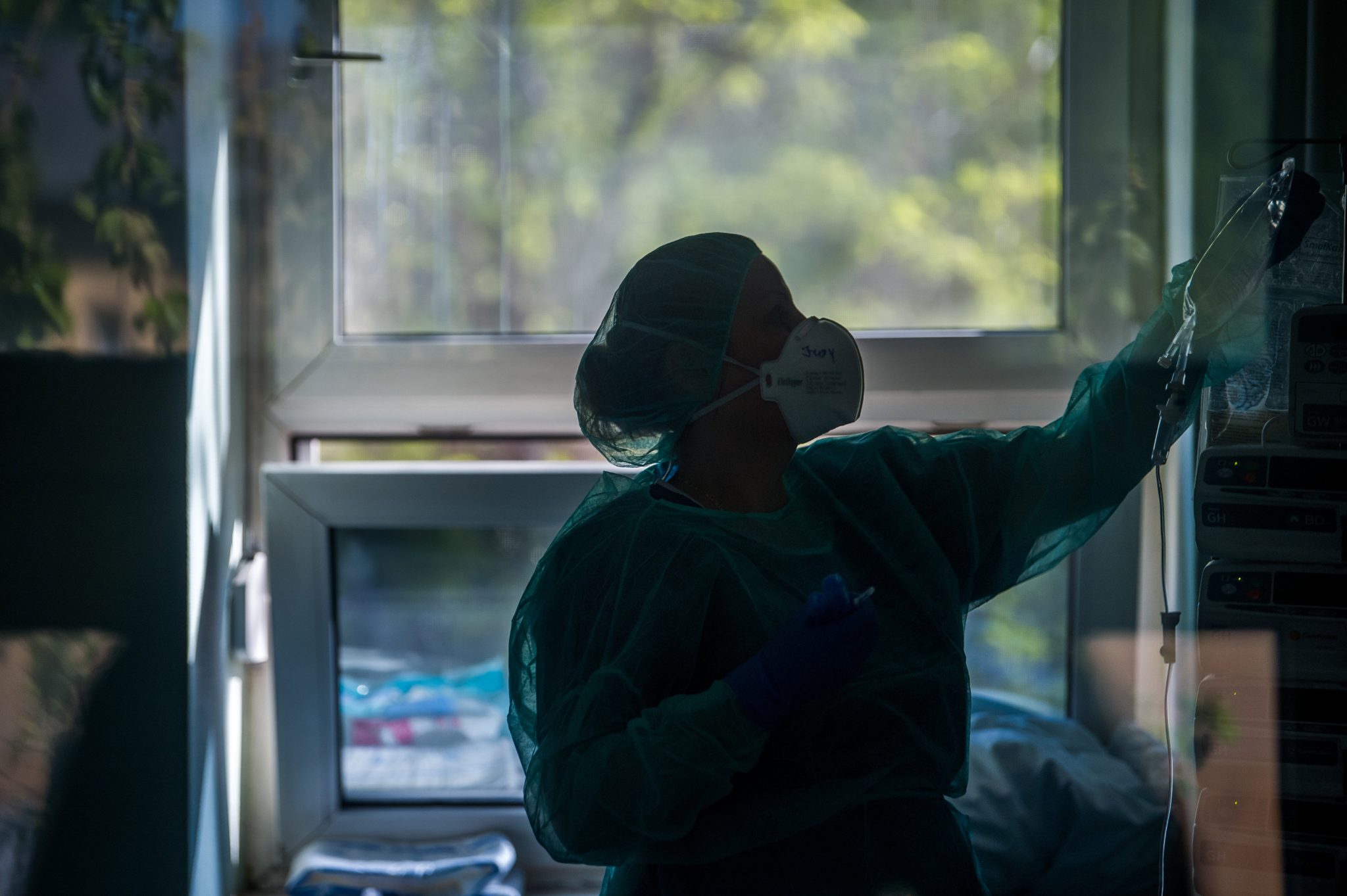
The number of people awaiting surgery in Hungary has increased by nine thousand since the end of the third Covid wave, bringing the national wait list to 41,000. The largest number of people waiting for cataract surgery is 15,000. The National Health Insurance Fund Manager (NEAK) is trying to reduce the waiting list through performance-based financing and by settling administrative fees.
In the spring of 2020, a more than two-month disruption of Hungarian healthcare due to the coronavirus pandemic meant that already terribly long waiting lists for surgeries got even longer.
Last summer, even though outpatient specialist clinics reopened and hospitals were able to resume work, the new wave of the pandemic and the lockdown in Hungary began in the autumn. After setting up coronavirus wards, the capacity of hospitals was further reduced.
Experts already predicted last year that waiting lists would skyrocket after the state of emergency was over, but as the epidemic drags on with a new fourth wave on the horizon, more and more operations are being canceled.
Related article
Chronically Long Wait Times for Treatment in Hungarian Hospitals
Healthcare in Hungary is always a topic of debate. While citizens are liable to pay sizeable health-care taxes each month, many say that in the healthcare system the circumstances are often unacceptable. Mfor.hu’s article, which focuses on the wait time for certain operations, seems to confirm these concerns. In the National Assembly, Secretary of State […]Continue reading
Based on official data, the number of people awaiting surgery in Hungary has increased by nine thousand since the end of the third Covid wave in May, bringing the national wait list to 41,000.
While the average wait time for a knee replacement surgery was 389 days at the beginning of June last year, it was 471 days at the beginning of January 2021. Currently (as of September 8th), it is 599 days according to public data from the government’s National Health Insurance Fund Manager (NEAK).
For hip replacement surgery, the average planned wait time was 324 days over a year ago, which has increased to 496 days as of this month.
The highest number of patients are waiting for cataract surgery- 195 days on average. At the beginning of the year, the number of people in need of the procedure was 9,443, but it has now rose to 15,727.
These figures are particularly grim because all of the procedures mentioned above are associated with a clear and significant deterioration in the quality of one’s life.
The pandemic is not the only problem
Although the pandemic is an undeniably important factor, the devastating growth rate of people awaiting non-emergency procedures is partly due to several other reasons as well.
According to Adrianna Soós, president of the Independent Health Care Trade Union (FESZ), the increase in wait lists – in addition to the increase in elective surgeries during the coronavirus pandemic – is the result of the lack of funding, many professionals leaving the sector, and underpaid health workers (nurses, operating nurses, etc.). Soós says that as long as the number of healthcare workers is lacking, wait lists will not go down.
Another major problem is the lack of performance incentives. During the epidemic, hospitals switched from performance-based financing to base financing. This means that hospitals and doctors were no longer interested in performing as many surgeries as possible, as they did not receive funding in proportion to the number but were eligible for the same amount of money regardless. Although the performance-based model has been reinstated since then (on September 1st) but its impact has left its mark on waiting lists.
Also, last October, the government passed a new law granting doctors working in public institutions an unprecedentedly high pay raise. However, many critics of the legislation claim it introduces an oversimplistic wage scale, with time at their practice as the main measure, regardless of the medical field in which a doctor works. As a result, a doctor in Hungary who performs a minor routine operation is paid the same as a cardiac or neurosurgeon who performs the most critical surgeries.
Related article
Despite Historic Rise, Bill re: Doctors' Salaries Consists of 'Unacceptable' Points, says Medical Chamber
After a meeting between the government and the Hungarian Medical Chamber (MOK) on Saturday, the doubling of medical workers’ salaries and the withdrawal of gratitude money from the Hungarian healthcare system came within reach. A bill to that effect appeared on Parliament’s website on Monday after it had been tabled. However, according to the MOK, […]Continue reading
An even more serious problem despite doctors having received a salary increase, other healthcare employees such as nurses, operation nurses, and anesthesiologist assistants did not get the same pay raise, causing even more tension regarding wages.
Related article
Demonstration on Agenda as Healthcare Professionals' Discontent Grows
Healthcare professionals deserve more both financially and morally, in the Chamber's view.Continue reading
Regional disparities are another major point of concern. In Hungary, a primary referral is the hospital of the registered place of residence or stay. As a result, many patients often find themselves on the backlog of wait lists for procedures that would be readily available in other places in the country.
Medical Chamber: a complex set of measures needed
The Hungarian Medical Chamber (MOK) also drew attention to the problem presented by the extremely long wait lists. The deputy head of the chamber emphasized in August that even if Hungary didn’t have to deal with a fourth Covid wave, it would take at least five months for the Hungarian healthcare system to recover.
Healthcare is a year and a half behind not only in terms of wait lists, but also in setting up diagnoses and treating chronic patients: it will be very difficult to control this situation, Rita Lénárd told InfoRadio.
The health organization has also contacted Miklós Kásler, the Minister of Human Resources, about the gravity of the situation.
Related article
Elective Surgeries Resume, Waiting Lists Unlikely to Soon Diminish
The postponable operations have been on hold since November 10th, but due to the outbreak, all of last year was bumpy in this matter.Continue reading
In their letter, the MOK says that once the epidemic has subsided, the biggest challenge facing the healthcare system is the problem of managing the backlog of wait lists.
According to the MOK leadership, the situation can only be tackled through a complex set of measures, including the restoration of performance-based financing to ensure that as many patients as possible have access to care before the next wave of the epidemic.
NEAK promises 30% extra funding
Meanwhile, the National Health Insurance Fund (NEAK) is trying to cut back hospital wait lists with 30% extra funding, director-general Zsolt Kiss revealed during a recent professional conference, according to Népszava’s report. Another major obstacle to the relaunch of patient care is the lack of incentives for doctors to take on on-call duties under the new payment system. This is now also being addressed, according to NEAK.
Featured photo illustration by Zsolt Szigetváry/MTI




